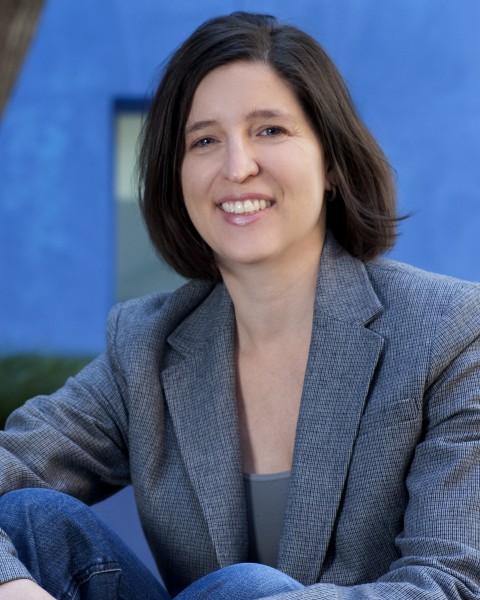Susan Athey – Causal Inference for Policy Evaluation
Stanford Graduate School of Business

Susan Athey is The Economics of Technology Professor at Stanford Graduate School of Business. She received her bachelor’s degree from Duke University and her Ph.D. from Stanford, and she holds an honorary doctorate from Duke University. She previously taught at the economics departments at MIT, Stanford and Harvard. In 2007, Professor Athey received the John Bates Clark Medal, awarded by the American Economic Association to “that American economist under the age of forty who is adjudged to have made the most significant contribution to economic thought and knowledge.” She was elected to the National Academy of Science in 2012 and to the American Academy of Arts and Sciences in 2008. Professor Athey’s research focuses on the economics of the internet, online advertising, the news media, marketplace design, virtual currencies and the intersection of computer science, machine learning and economics. She advises governments and businesses on marketplace design and platform economics, notably serving since 2007 as a long-term consultant to Microsoft Corporation in a variety of roles, including consulting chief economist.
Abstract: A variety of scientific problems require the researcher to evaluate the causal effect of a policy or intervention, such as giving a drug to a patient, changing a government policy such as the minimum wage, exposing a user to an advertisement, or releasing a new algorithm to users in an online service. This talk will review a series of recently developed statistical methods for causal inference in settings with many covariates. We consider approaches to estimating average effects of a policy in observational data as well as approaches for estimating heterogeneous treatment effects and personalized policies in randomized experiments. We show how popular methods such as regression trees and random forests can be adapted and optimized to produce estimates of treatment effects as well as confidence intervals.
Christos Faloutsos – Mining Large Graphs: Patterns, Anomalies, and Fraud Detection
Carnegie Mellon University

Christos Faloutsos is a Professor at Carnegie Mellon University. He has received the Presidential Young Investigator Award by the National Science Foundation (1989), the Research Contributions Award in ICDM 2006, the SIGKDD Innovations Award (2010), 22 “best paper” awards (including four “test of time” awards), and four teaching awards.
Six of his advisees have attracted KDD or SCS dissertation awards. He is an ACM Fellow, he has served as a member of the executive committee of SIGKDD; he has published over 300 refereed articles, 17 book chapters and two monographs. He holds nine patents and he has given over 40 tutorials and over 20 invited distinguished lectures. His research interests include large-scale data mining, for graphs and streams; networks, fractals, and multimedia databases.
Abstract: Given a large graph, like who-calls-whom, or who-likes-whom, what behavior is normal and what should be surprising, possibly due to fraudulent activity? How do graphs evolve over time? We focus on these topics:
(a) anomaly detection in large static graphs and
(b) patterns and anomalies in large time-evolving graphs.
For the first, we present a list of static and temporal laws, we show how to use them to spot suspicious activities, in on-line buyer-and-seller settings, in FaceBook, in twitter-like networks. For the second, we show how to handle time-evolving graphs as tensors, as well as some discoveries such settings.
Fei-Fei Li – A Quest for Visual Intelligence in Computers
Stanford University

Dr. Fei-Fei Li is an Associate Professor in the Computer Science Department at Stanford, and the Director of the Stanford Artificial Intelligence Lab and the Stanford Vision Lab. She is also the Director of the recently established Stanford Toyota Center for Human-Centric AI Research. Dr. Fei-Fei Li’s main research areas are in machine learning, computer vision and cognitive and computational neuroscience. She has published more than 100 scientific articles in top-tier journals and conferences, including Nature, PNAS, Journal of Neuroscience, CVPR, ICCV, NIPS, ECCV, IJCV, IEEE-PAMI, etc. Dr. Fei-Fei Li obtained her B.A. degree in physics from Princeton in 1999 with High Honors, and her PhD degree in electrical engineering from California Institute of Technology (Caltech) in 2005. She joined Stanford in 2009 as an assistant professor, and was promoted to associate professor with tenure in 2012.
Prior to that, she was on faculty at Princeton University (2007-2009) and University of Illinois Urbana-Champaign (2005-2006). Dr. Fei-Fei Li is a speaker at the TED2015 main conference, a recipient of the 2014 IBM Faculty Fellow Award, 2011 Alfred Sloan Faculty Award, 2012 Yahoo Labs FREP award, 2009 NSF CAREER award, the 2006 Microsoft Research New Faculty Fellowship and a number of Google Research awards. Work from Dr. Li’s lab have been featured in a variety of popular press magazines and newspapers including New York Times, Science, Wired Magazine, and New Scientists.
Abstract: It takes nature and evolution more than five hundred million years to develop a powerful visual system in humans. The journey for AI and computer vision is about fifty years. In this talk, I will briefly discuss the key ideas and the cutting edge advances in the quest for visual intelligences in computers. I will particularly focus on the latest work developed in my lab for both image and video understanding, powered by big data and the deep learning (a.k.a. neural network) architecture.
Daniel Spielman – Laplacian Matrices of Graphs: Algorithms and Applications.
Yale University

Daniel Alan Spielman received his B.A. in Mathematics and Computer Science from Yale in 1992, and his Ph.D in Applied Mathematics from M.I.T. in 1995. He spent a year as a NSF Mathematical Sciences Postdoc in the Computer Science Department at U.C. Berkeley, and then taught in the Applied Mathematics Department at M.I.T. until 2005. Since 2006, he has been a Professor at Yale University. He is presently the Henry Ford II Professor of Computer Science, Mathematics, and Applied Mathematics.
He has received many awards, including the 1995 ACM Doctoral Dissertation Award, the 2002 IEEE Information Theory Paper Award, the 2008 and 2015 Godel Prize, the 2009 Fulkerson Prize, the 2010 Nevanlinna Prize, the 2014 Polya Prize, an inaugural Simons Investigator Award, and a MacArthur Fellowship. He is a Fellow of the Association for Computing Machinery and a member of the Connecticut Academy of Science and Engineering. His main research interests include the design and analysis of algorithms, network science, machine learning, digital communications and scientific computing.
Abstract: The Laplacian matrices of graphs arise in fields including Machine Learning, Computer Vision, Optimization, Computational Science, and of course Network Analysis. We will explain what these matrices are and why they arise in so many applications. In particular, we will show how Laplacian system solvers can be used to quickly solve linear programs arising from natural graph problems.

